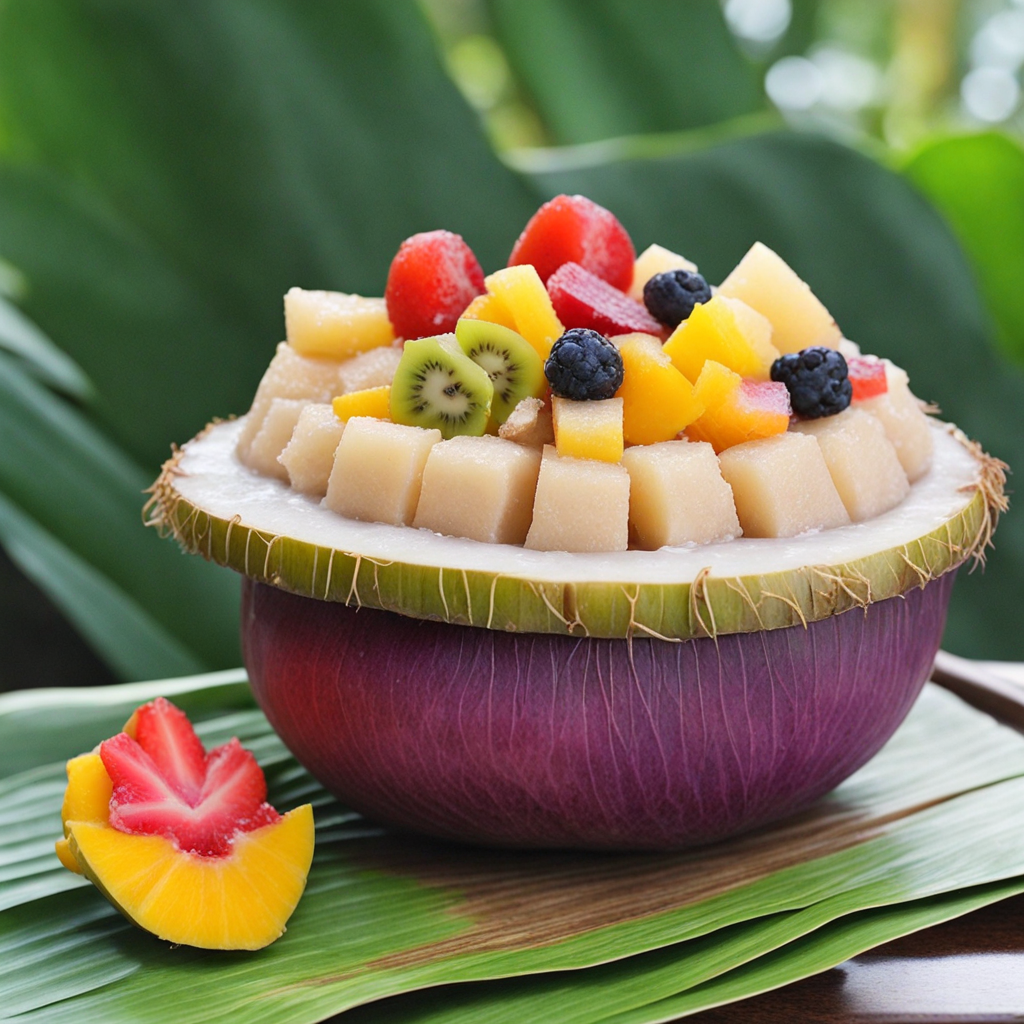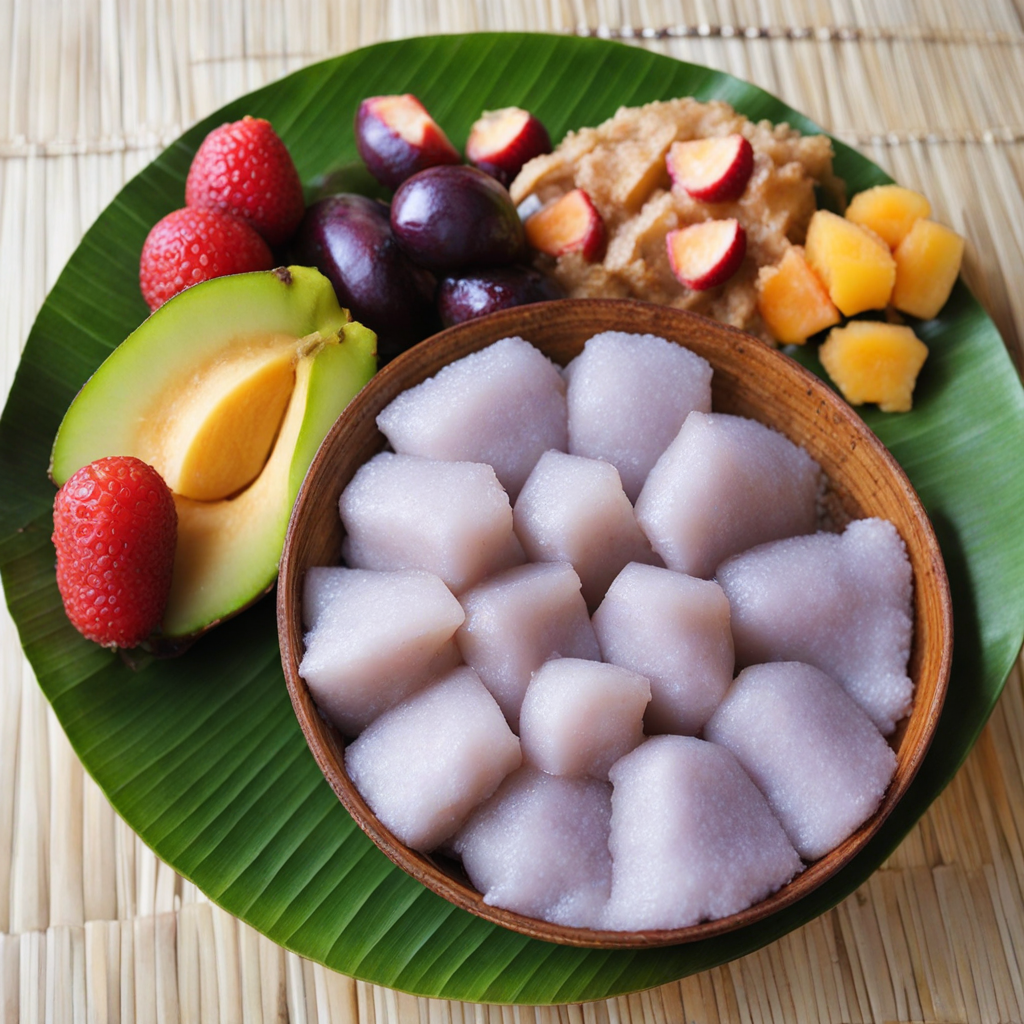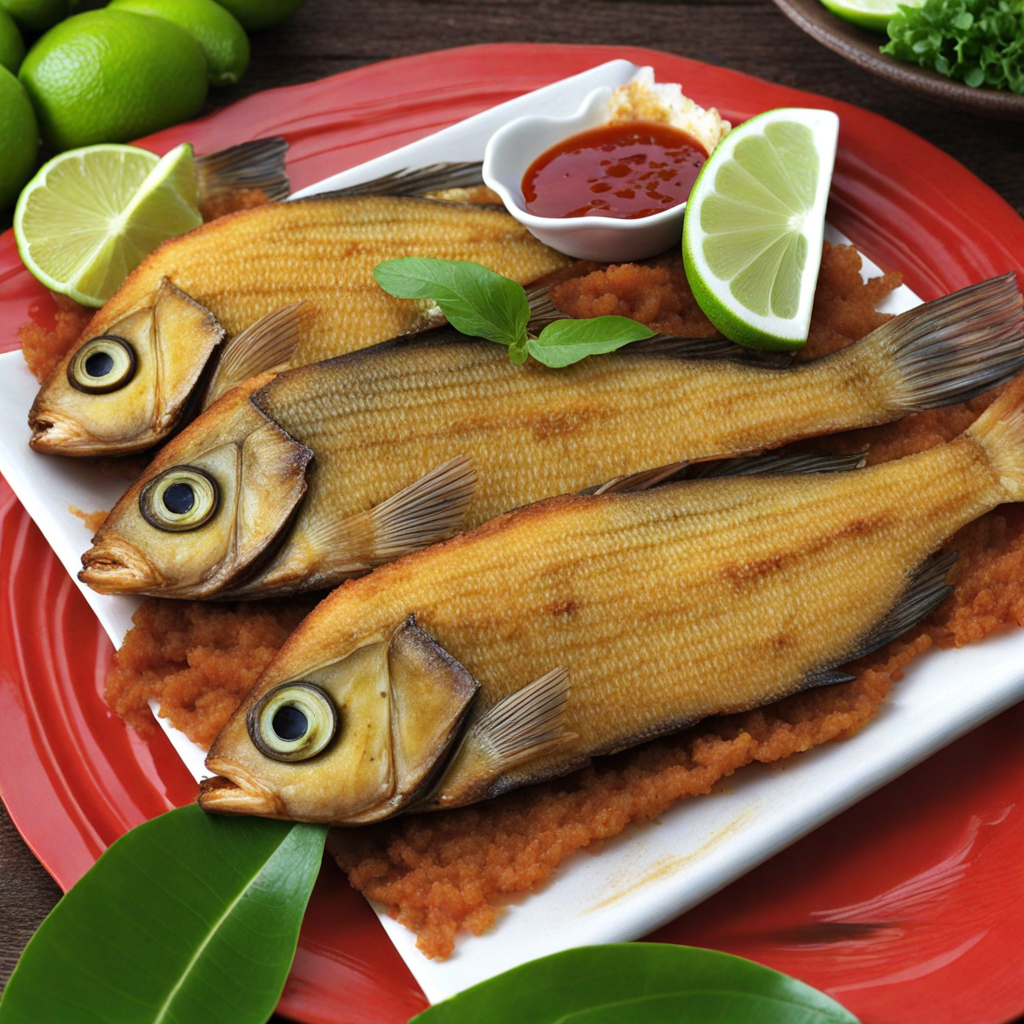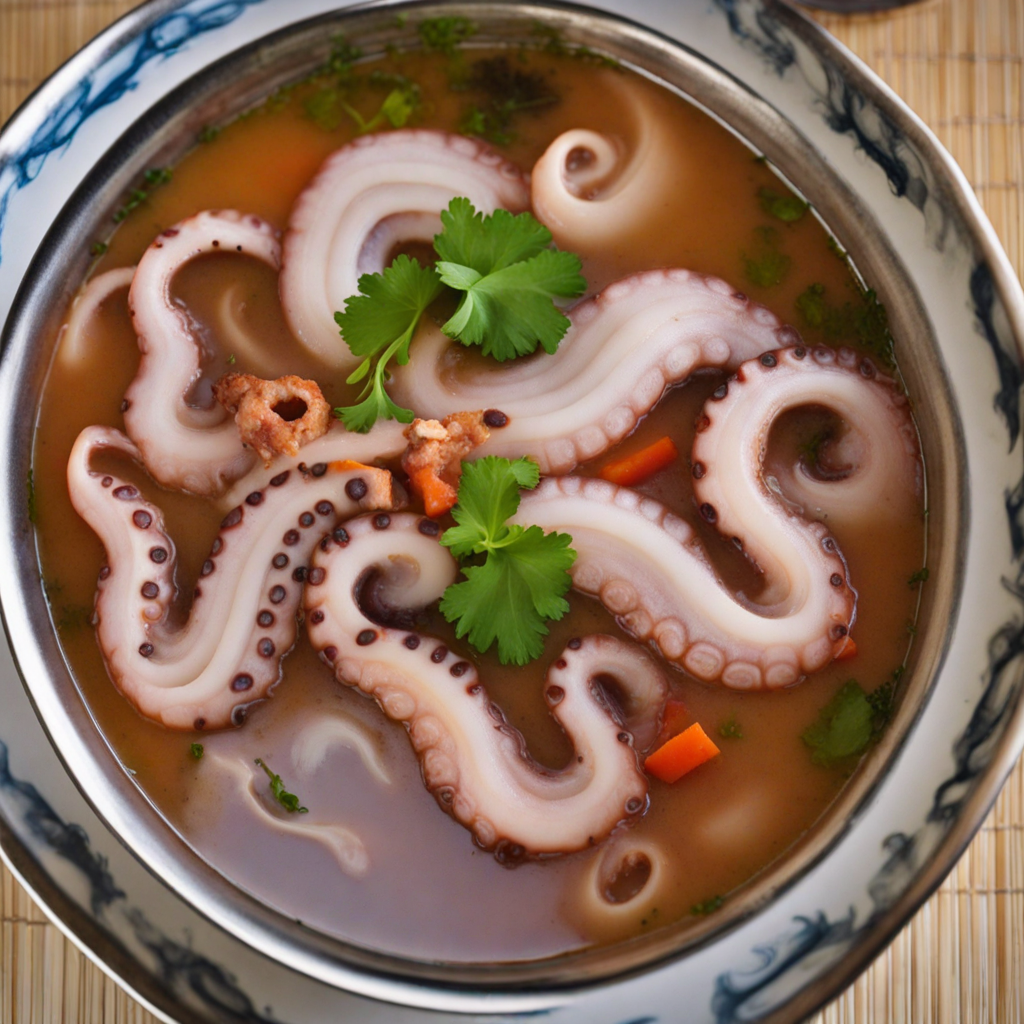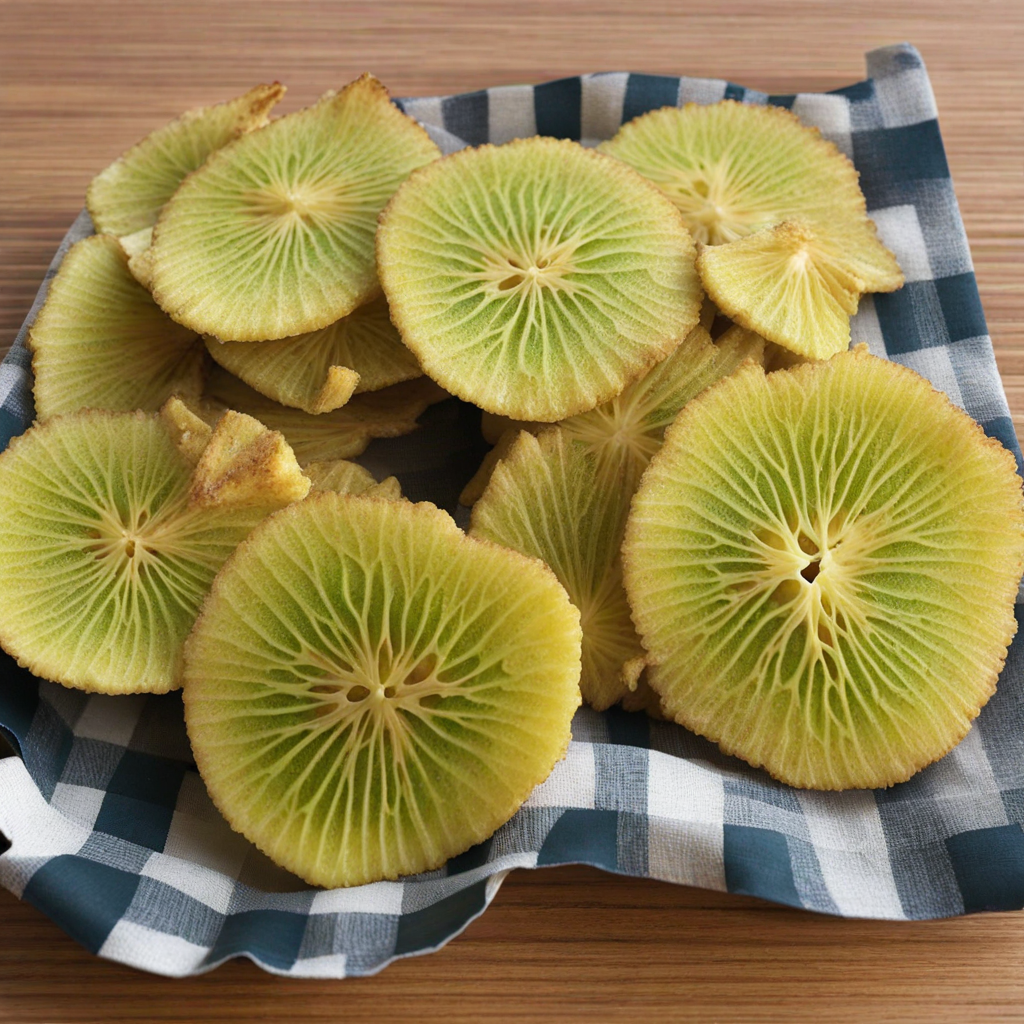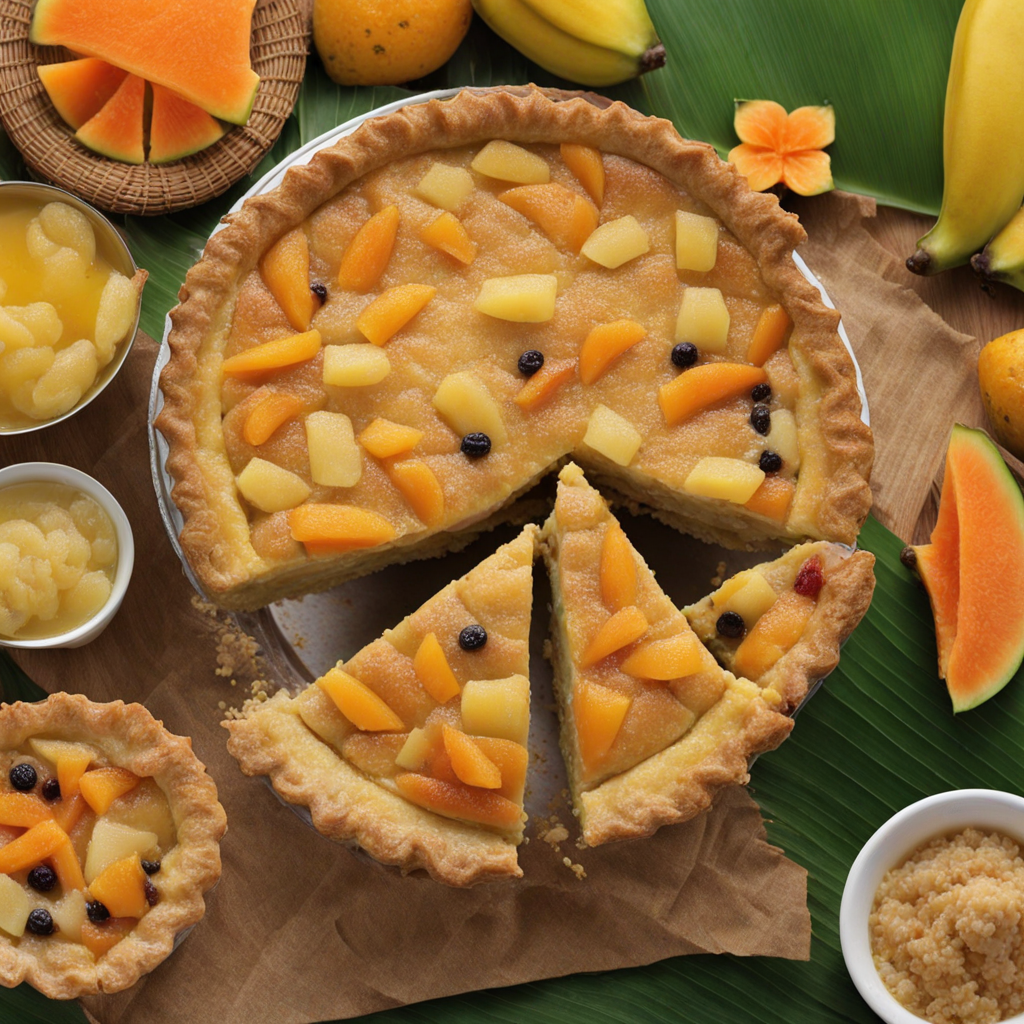Fruit Taro
Fruit Taro, a unique culinary gem from Tuvalu, is a delightful root vegetable that captures the essence of tropical flavors. This starchy tuber is not only visually appealing with its striking purple and white marbling but also boasts a subtly sweet flavor profile that can captivate any palate. When cooked, Fruit Taro transforms into a creamy texture reminiscent of a rich potato, making it a versatile ingredient that can be enjoyed in various dishes, from savory to sweet. The preparation of Fruit Taro often involves boiling or steaming, which enhances its natural sweetness and allows it to absorb flavors from accompanying ingredients. In Tuvaluan cuisine, it is commonly paired with coconut milk, spices, and local vegetables, creating a harmonious blend that speaks to the region's culinary traditions. Whether served as a side dish or incorporated into stews and curries, Fruit Taro offers a comforting and satisfying experience that is both nourishing and delicious. For those adventurous enough to explore its uses in desserts, Fruit Taro can be mashed and sweetened, then used as a filling for pastries or transformed into a pudding-like dish. The unique flavor and texture of this tuber make it an exciting ingredient for both traditional and modern recipes, inviting food enthusiasts to discover the rich culinary heritage of Tuvalu through a taste that is truly one-of-a-kind.
How It Became This Dish
The Culinary Heritage of Fuala Talo: A Culinary Treasure from Tuvalu Fuala Talo, a beloved dish from the small island nation of Tuvalu, is a delightful representation of the rich culinary heritage and cultural significance of the Pacific Islands. To understand Fuala Talo, one must explore its origins, the cultural practices surrounding it, and how it has evolved over time. Origins and Ingredients Fuala Talo, often referred to as taro pudding, is primarily made from taro (Colocasia esculenta), a starchy root vegetable that has been cultivated in the Pacific Islands for thousands of years. Taro is a staple food in Tuvalu, as well as in many other Pacific nations, and it holds a significant place in the diet and culture of the people. Its cultivation is deeply rooted in the traditions of the islands, where it has been grown in communal gardens and harvested for generations. The dish itself is a simple yet versatile preparation that highlights the natural sweetness of taro. Traditionally, the taro is boiled and then mashed or grated into a smooth consistency. Coconut milk, a common ingredient in Tuvaluan cuisine, is often incorporated to enrich the flavor and add creaminess. Sometimes sugar or other flavorings, such as vanilla or pandan leaves, are added to create a delightful dessert or snack. Cultural Significance Fuala Talo is more than just a food item; it is a symbol of Tuvaluan identity and cultural heritage. In Tuvalu, food is intertwined with social practices, community gatherings, and traditional ceremonies. Fuala Talo is often prepared for special occasions such as weddings, feasts, and cultural festivals. Its presence at these events signifies hospitality, unity, and the sharing of resources among community members. The preparation of Fuala Talo is also a communal activity. Families come together to harvest taro, prepare the dish, and enjoy it as part of a larger feast. This practice reinforces social bonds and fosters a sense of community, as people gather to share not just food but also stories, laughter, and life experiences. Additionally, Fuala Talo is a reflection of the Tuvaluan connection to the land and sea. The islanders have a profound respect for their natural resources, and the cultivation of taro demonstrates their sustainable agricultural practices. The dish embodies the principles of food sovereignty, as it is made from locally sourced ingredients and represents the resilience of the Tuvaluan people in maintaining their culinary traditions despite modern challenges. Evolution Over Time The development of Fuala Talo over time reflects broader historical changes in Tuvalu and the Pacific region. The arrival of European explorers and settlers in the 18th and 19th centuries introduced new ingredients and cooking techniques to the islands. While traditional ingredients like taro and coconut remained central to Tuvaluan cuisine, the influence of these external cultures began to diversify the culinary landscape. In the 20th century, as Tuvalu navigated its path to independence and faced globalization, Fuala Talo adapted to contemporary tastes and preferences. While the traditional preparation of the dish remains cherished, modern variations have emerged. For instance, Fuala Talo may now be found in cafes and restaurants, sometimes served alongside other Pacific-inspired dishes or with innovative toppings. The integration of other sweeteners, such as honey or chocolate, has also contributed to its evolution, appealing to younger generations and tourists alike. The modernization of culinary practices has also seen the rise of food preservation techniques that allow Fuala Talo to be enjoyed beyond the traditional communal settings. Freezing and vacuum-sealing methods enable the dish to be stored and shared, bridging the gap between the past and present. This evolution reflects the adaptability of Tuvaluan cuisine while maintaining a connection to its roots. Global Recognition and Contemporary Context In recent years, there has been a growing interest in Pacific Island cuisines, with chefs and food enthusiasts seeking to celebrate and promote traditional dishes. Fuala Talo has gained recognition beyond Tuvalu, appearing in international food festivals, culinary competitions, and social media platforms. This newfound attention highlights the importance of preserving indigenous foods and the stories behind them. However, the global spotlight on Fuala Talo also raises important questions about cultural appropriation, authenticity, and sustainability. As Tuvalu faces the impacts of climate change, including rising sea levels and changing weather patterns, the preservation of traditional food practices becomes even more crucial. The community's connection to taro and its cultivation is threatened, making the continued appreciation and support for Fuala Talo vital for the future of Tuvaluan culture. Conclusion Fuala Talo is much more than a simple dish; it encapsulates the essence of Tuvaluan culture, history, and identity. Its origins in the fertile soils of the Pacific Islands, combined with its cultural significance in community life and celebrations, create a tapestry of meaning that resonates with both locals and those who encounter it abroad. As Fuala Talo continues to evolve and adapt to contemporary contexts, it remains a cherished symbol of resilience and the enduring legacy of Tuvaluan culinary traditions. In a world that is increasingly interconnected yet often disconnected from cultural roots, dishes like Fuala Talo remind us of the importance of heritage, community, and the stories that food can tell. By honoring and sharing these traditions, we not only celebrate the unique flavors of Tuvalu but also contribute to the preservation of a rich cultural legacy that deserves to be savored by generations to come.
You may like
Discover local flavors from Tuvalu


